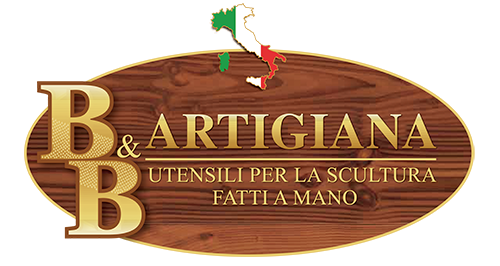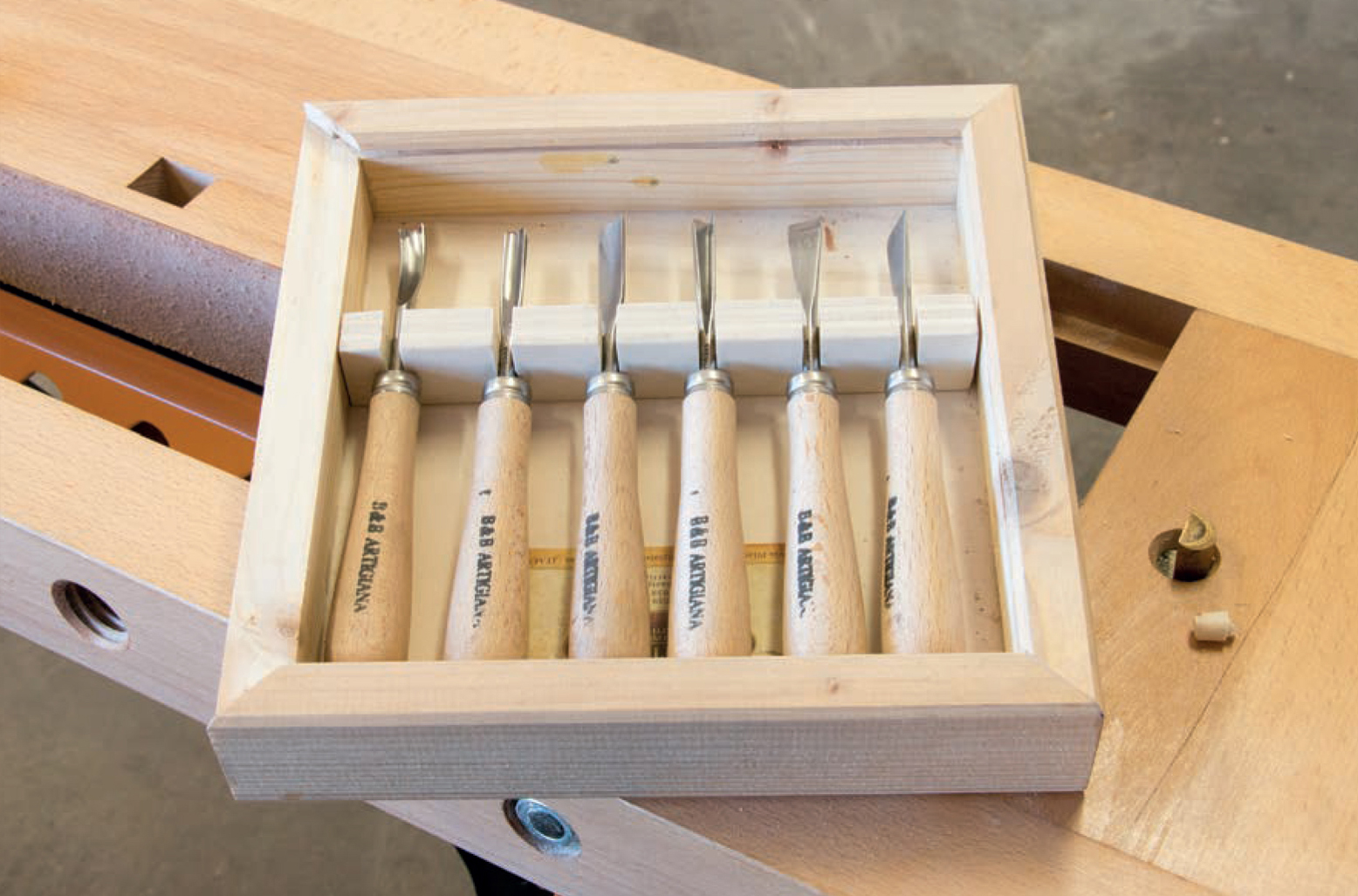Impressions: miniature gouges
This small company in Olgiate Molgora (in the northern Italian province of Lecco) is already known for its hand-punched rasps and carving gouges, but now it has added a series of small gouges to its collection. And these are particularly interesting on the cost front. We don’t think there is any doubt that the biggest obstacle to a beginner getting into sculpture is the cost of the tools. Even buying the basic gouges needed to really start sculpting or carving has a cost and so many people don’t even start down this road. So, having a pretty good range of tools at a reasonable cost seemed like a good reason to review this Made in Italy set.
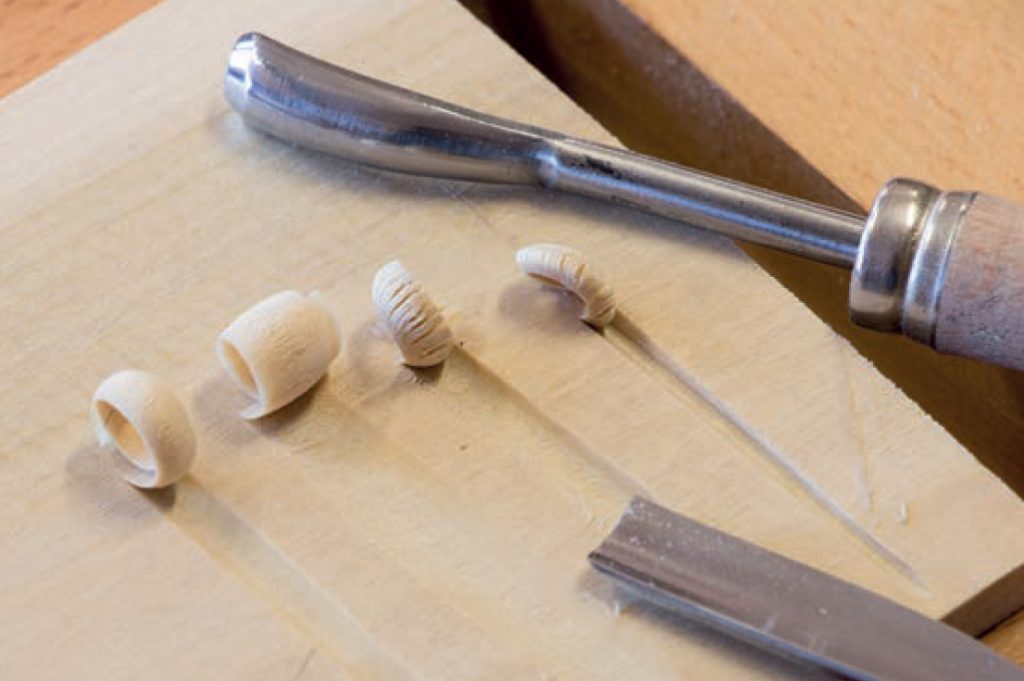
In our standard cutting tests, taking the tools right out of the box without even looking at their sharpness, these gouges produced excellent results. Each shape cut well, without any burrs or particularly coarse residues.
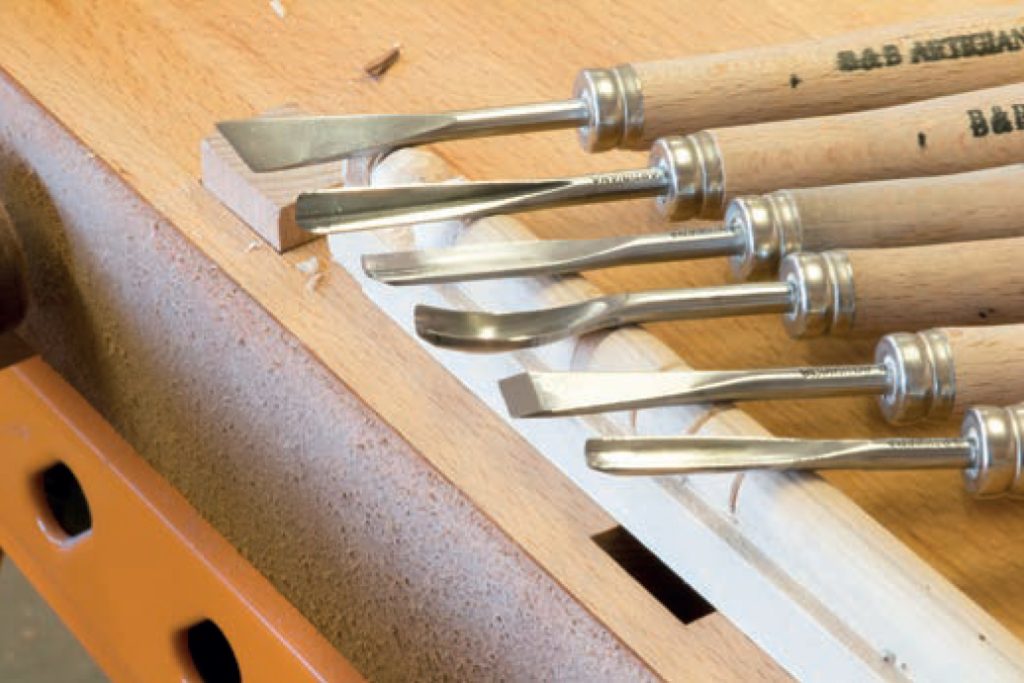
The available shapes for these miniature gouges provide a range for everything from roughing out to finishing. The curved option has limited use, but it does provide the option of making deep gouges.
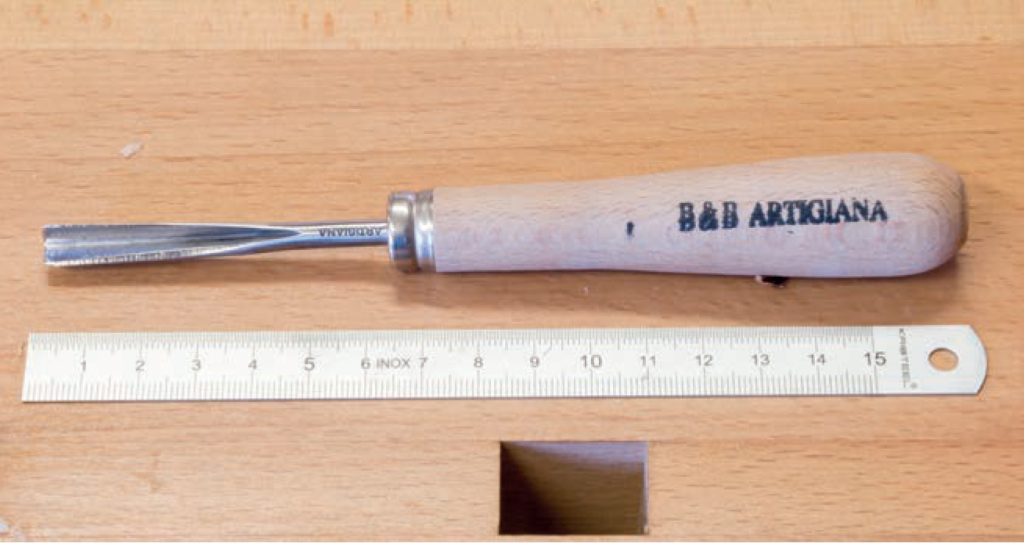
All the gouges are made by forging a 5mm diameter steel rod. The total length is not more than 18 cm. This facilitates storage and transportation. The untreated beech handle is comfortable.

The tapered shape of the handle is easy to push with the palm of your hand. As the blade is particularly short, it is especially easy to control. The lack of weight makes these tools easy to use, a bit like a pen for making a last few touch ups.
In this review we looked at six pieces: a 10mm flat chisel, a 10mm oblique chisel, a no. 7 gouge (7 mm), a 60° V-parting tool (6 mm), a no. 8 spoon gouge (8 mm) and a no. 4 gouge (10 mm). This seems like a fairly complete selection and, within the evident size limits, they can be used for both roughing out, finishing and adding details. The spoon gouge is perhaps the least used, but it’s essential for deep gouges. All of the tools have an untreated beech wood handle and the blades are sharpened and ready for use. There is no finishing stone to sharpen them, but that might be a good thing. In our experience, the type of stone you get in collections is too fine or too rough and a good set for sharpening, even if it only has small stones, is relatively expensive. Still, if any of our readers don’t have a finishing stone, we’d recommend purchasing some sandpaper for metal (280; 400; 800; 1200 grit). It is then possible to glue these to a rigid, flat backing to create a complete sharpening set for minimal outlay. Then, as we have mentioned on multiple times in these pages, using abrasive paste for car bodywork and leather provides a good option for finishing. Returning to our topic at hand, the standard sharpening for the miniature tools from B&B is shiny and well done. The normal “out of the box” test using tulipwood across the grain produced a good result. The shape of the cutting edges, with the edge a little convex in the middle and retracted at the sides, was good except for the no. 4 tool. We had to redo it, which did give us a chance to see the quality of the steel. Compared to the standard sizes from B&B, this metal seemed a little softer. It was not sufficiently soft to compromise the durability of the edge, but enough to mean we recommend these gouges for finishing and detail work. Of course, given their size, it seems unlikely they would be used for anything else.
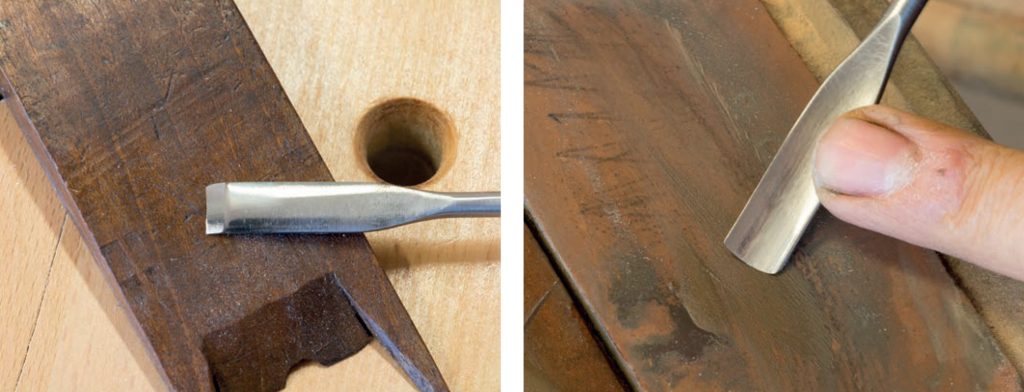
Right and wrong edge.
The no. 4 gouge was sharpened with an indented shape and with the edge flexed inwards. The work we did was to retract the outside edges slightly (thus without losing any length), working with stone by hand. The steel was compact but not especially hard.
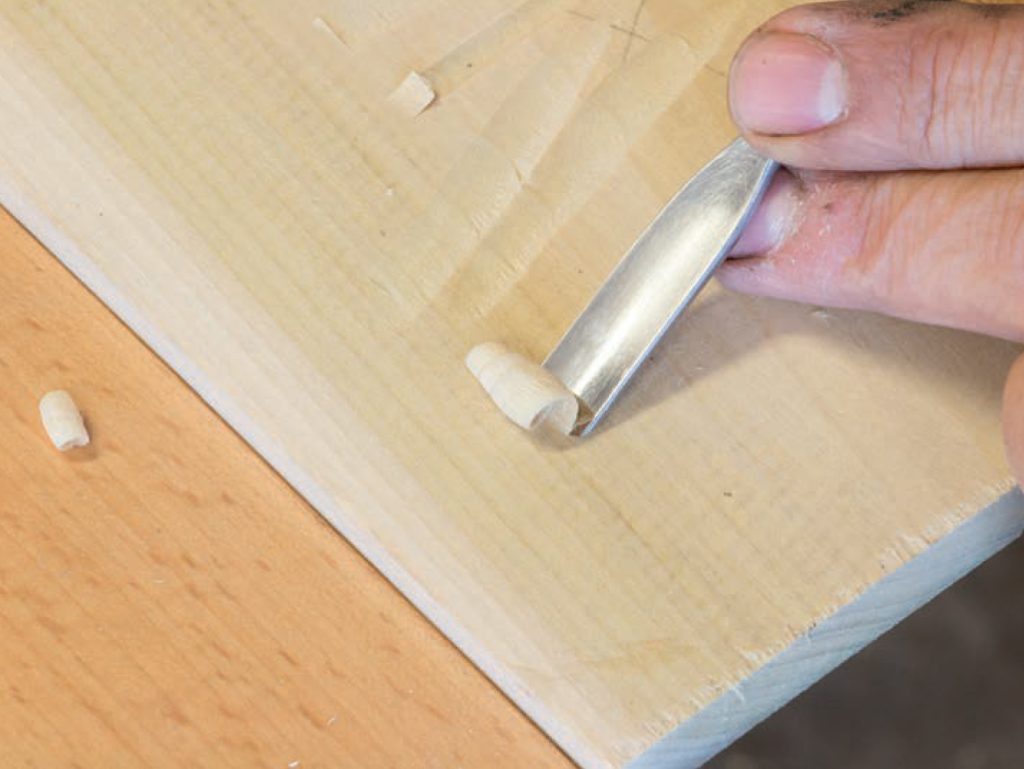
Hard or extremely hard steel?
There are two schools of thought on this. Some people prefer very hard tools that don’t need to be sharpened often. In such cases, the price to pay is more time spent on the stones to restore the edge. Other people favour a less hard cutting edge that needs to be spruced up more often, but requires minimal time. In all cases, it is important the grain of the metal is compact and fine. This is essential to produce a truly fine edge that cuts neatly through the wood fibres.
In general, such miniature gouges are used for relief cutting and detail work. The short handles make them similar to burins and easy to use with one hand. The ones we tested can be used like a pen or pyrograph. The tapering handle, which is more pronounced at the back, allows a firmer grip. In this case the palm of the hand is used to impart the thrust. The length of the handle (10cm out of the total of 17cm) does make it possible to use a small hammer without the problem of the hammer head covering the view of the work being done. These gouges would work well in restoration work and micro-carving, although there are not really limits on their use. These tools could easily be used for bonsai work, engraving linoleum or decorating walking sticks.
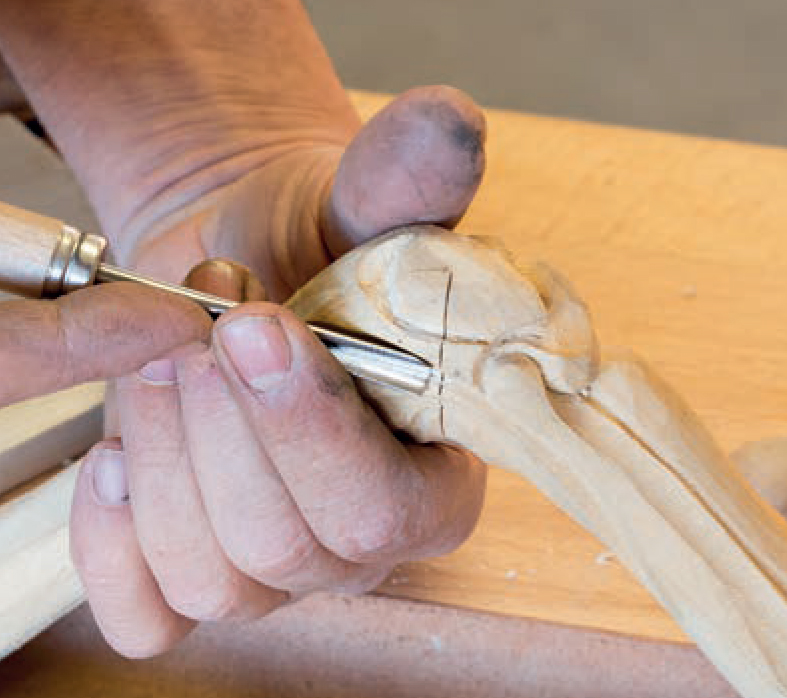
A set of smaller, lighter gouges (than the standard models) can be very useful even for finishing and adding the trickiest details on ordinary-sized sculptures or carvings.

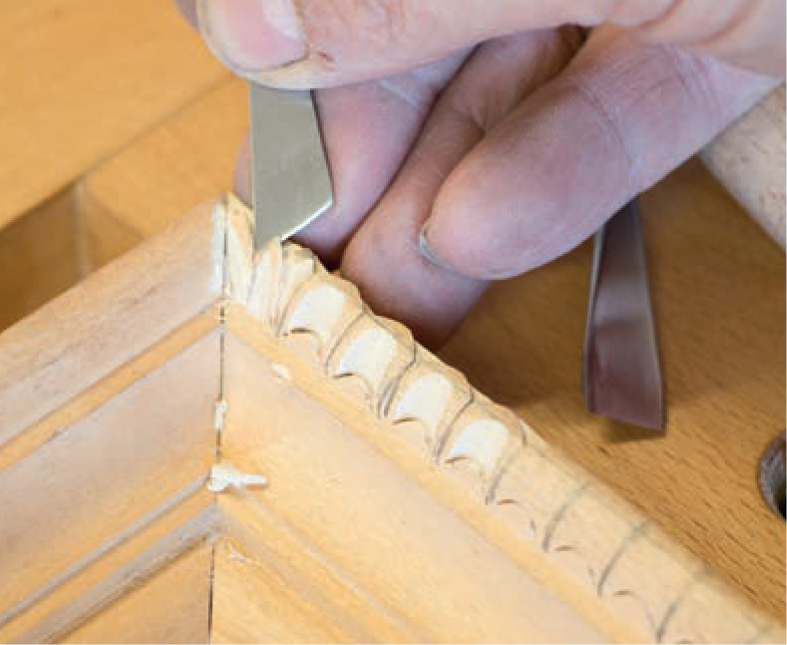
Miniatures, model making, restoration, woodcuts and engraving. There are many areas in which these miniature gouges can be used, although their small size really does make them ideal for work where absolute precision is fundamental.
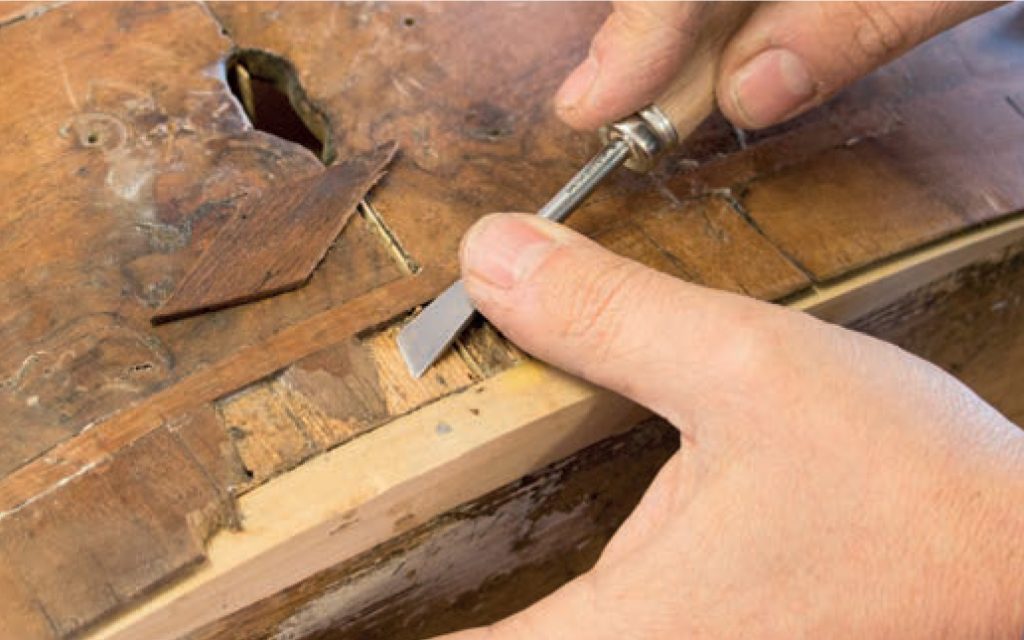
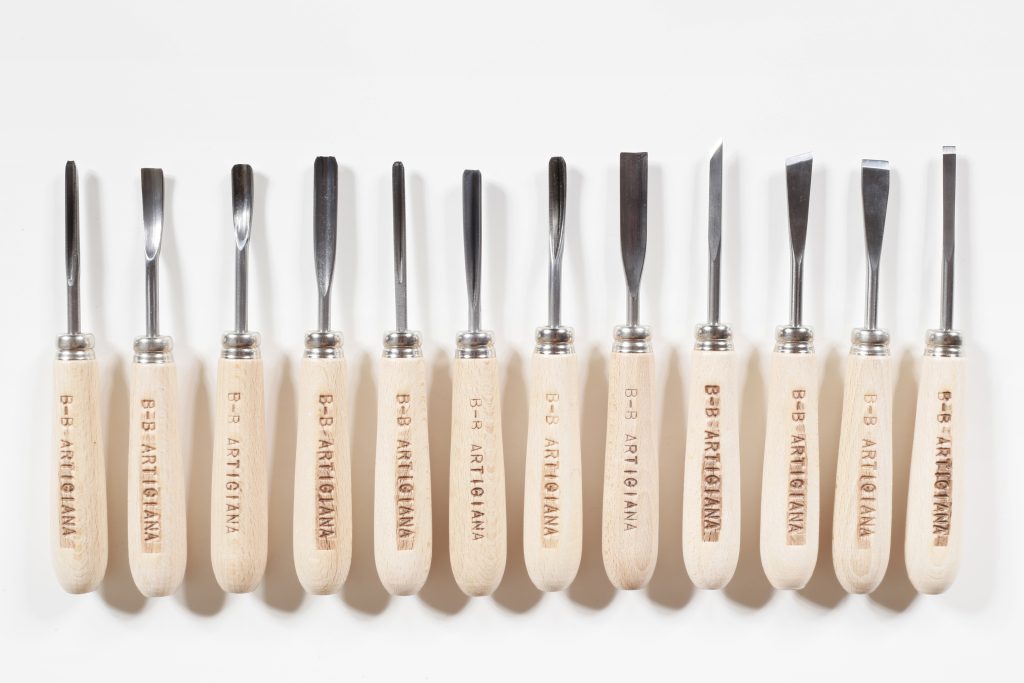
The current miniature gouge range includes 12 options, which can be bought individually or in kits of 6, 9 or 12 tools.
Review by: Giacomo Malaspina – Legno Lab
